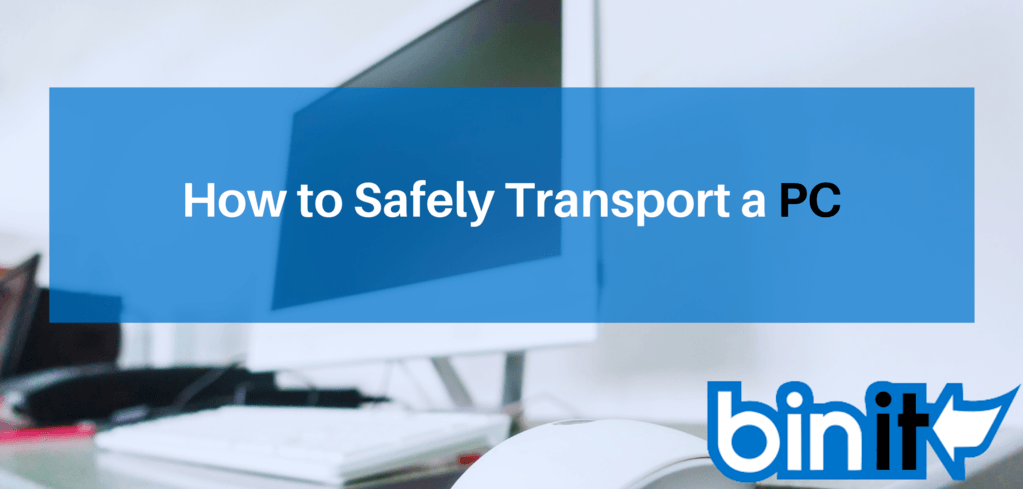
Moving your PC to your new home or office can be a tricky process to execute. What makes it a difficult and time-consuming process is the fragility and complexity of modern PCs.
Pulling off a DIY move is a not-so-easy task, you must follow certain guidelines to transport the particular object safely. Down below is a step-by-step guide to safely transport a PC.
If you have ever moved before, you must have thoroughly packed delicate items like your LCD/LED TV or dinner set? The same goes for a computer. You have to take out all the detachable components inside the PC and pack them in different boxes. The boxes should have packing paper layers in them so the components do not get damaged.
The components you have detached from your PC that might be prone to damage during the moving process should be packed with care and precaution.
While disassembling your PC you should not only detach the major components but should also clean the inside using cleaning supplies. Make sure that the PC is packed in airtight packaging so dust does not enter the PC during transportation. Dust can damage the motherboard and other electrical components inside the PC.
Remember to turn your PC’s power supply off before you start disassembling it.
Every component you buy for your PC comes with a user manual, which includes the mandatory steps one needs to take to install, use or remove them. Disconnecting these items is only advised when you’re following the user manual that comes with them since sometimes a simple mistake can lead to component breakage and cause problems in the reinstallation process.
While unplugging the PC from the power supply, check for any power circuits connecting to other electrical components inside it, even the screws that go with the case.
From RGB cases to a LED-interfaced motherboard, most new PCs have different types of wiring which require care and a light hand to be removed. Then they can be packed in a box for the move.
Several movers have a rule of thumb where they don’t disconnect the PC themselves. This is because the chances of breaking or damaging a component are very high. Professional assistance can go a long way, but not in this case.
Similar to moving a cupboard or a refrigerator, you’ll need to measure just how wide or narrow the doorways are before you start moving the PC. In some rare cases, you might even have to remove the doors completely to make room for your PC to move out.
You can use a tape measure or get some other tools to find out the measurements. Just make sure you note down the height, width, and depth of your PC on a notepad so you know exactly how much space is required to move it and whether you have to remove the doors or not.
If the dimensions of your PC are too large and cannot be accommodated through the doors, then you should remove the doors. Similarly, if the PC needs to be moved through a flight of stairs and the railings are getting in between then you should also remove them.
Nowadays, similar to cupboards and desks, many computer cases have attachable wheels on them that you can take advantage of when moving it from one place to another. Carrying a next-gen PC by yourself is a risky process, especially if there are stairs involved.
Similar to fridges, you can put your PC on an appliance dolly that has additional straps, allowing you to have one person pick up the PC from the bottom while you handle and secure it from the sides. This allows you to safely load the PC onto the dolly. With the help of the bungee straps on the dolly, you’ll be able to tighten your PC into a secure position.
It is important to ensure that your PC is in an upright position on the dolly. But you can tilt it up to a 45-degree angle on the furniture slider to make sure it is safe while descending the flight of stairs.
While the PC is being guided by a dolly with straps, you should get help from another person which provides an upward force on the dolly and the PC. This way the dolly will not come down too quickly from the stairs.
Beware of floor damage though, and use a floor protector to protect the floor from getting scratched or damaged.
To transport your PC you will need a larger vehicle such as a pickup truck or you can contact a truck rental service.
While loading the PC onto the truck make sure that you have a platform such as a ramp to move the dolly up. You should avoid lifting the dolly because the PC on it can get imbalanced and trip over.
Instead of having to put your PC on the dolly again when it gets delivered and then having to unload it into your new place, you can keep it strapped and transport it with the same dolly. This maximizes the safety of the PC as well as saves time in the unloading procedure.
When you’re moving from one place to another, you need to have Bin-It movers by your side. Bin-It’s special plastic moving bins can make your moving clutter-free, easy, and less stressful. They also provide full moving solutions.
If you are someone that does not want to do a DIY PC move then you can call Bin-It to do it for you.
After following the steps above correctly and having your PC delivered to your new place. It will require the same amount of care and attention to reassemble it as required in disassembling it. After getting your PC in the right spot at your new place, reconnect the components and wires, plug it in, and set it up.